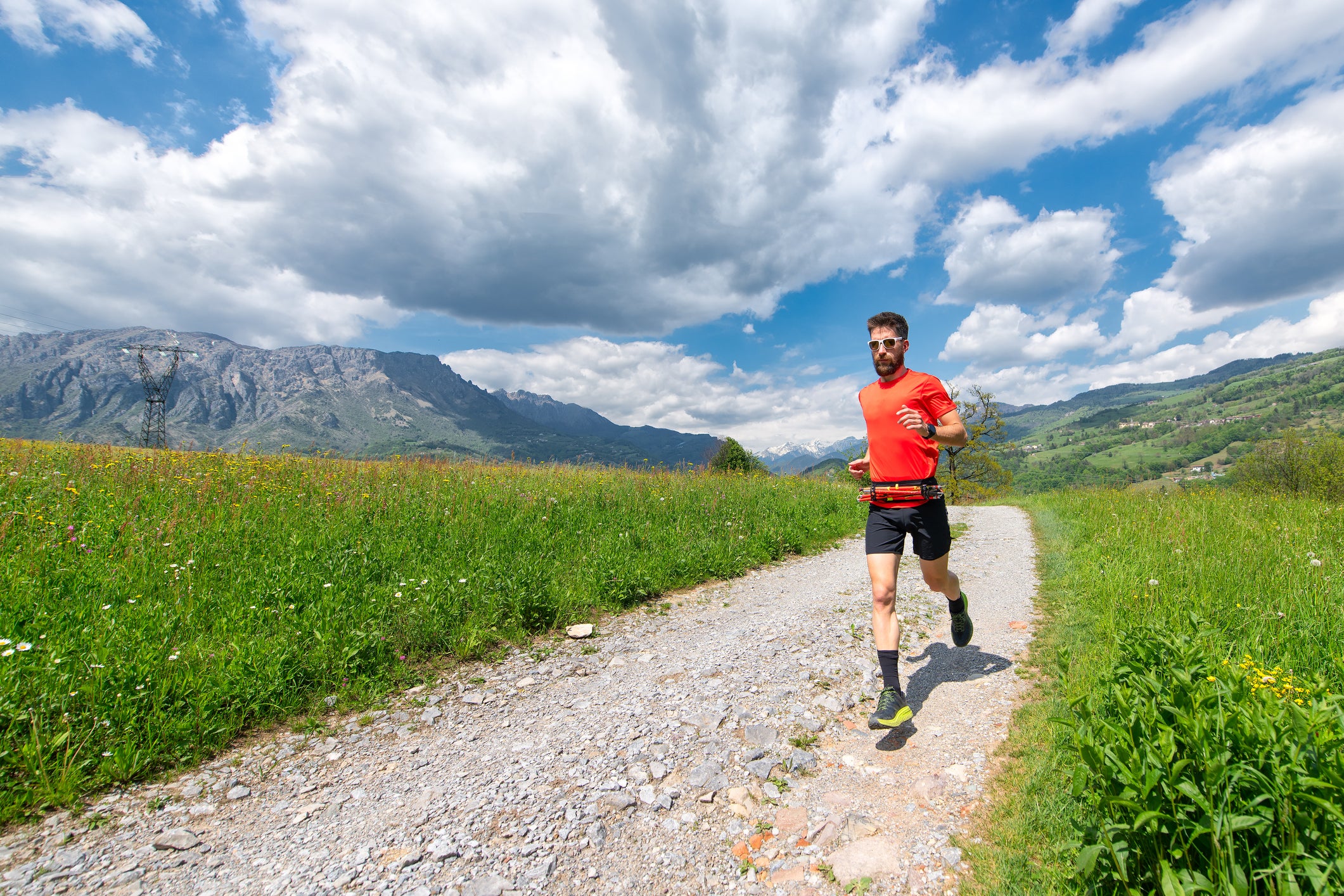How To Rock A "Last Runner Standing" Event

Ultra trail runner athlete prepares on a dirt road
Here it is, get ready. OK, I officially oversold this. Anyway: Peak performance in long ultra events requires less training than peak performance in road marathons.
That seems counterintuitive, but it all gets back to the idea that physically and mentally, every athlete in a longer ultra is entering the unknown. Where that unknown lies varies based on background and training status. For a professional ultra-athlete, somewhere around five to eight hours, they may be approaching physical demands they never touched in training. Long runs beyond that come with risks to the musculoskeletal system via injury and nervous system via overtraining that outweigh any long-term physiological benefits. Plus, excessively long runs outside of training races can cause athletes to slow down as they put out less power at the same effort level, reducing running economy.
And, psychologically, I’d rather athletes just be really, really fit and healthy rather than worry about the unknown too much. You don’t need to put your hand on the stove to know it’s hot. Meanwhile, in road marathons, athletes are trying to compress their aerobic threshold and lactate threshold, making sustainable efforts and hard efforts converge into a fast pace over a few hours. Because the performance inputs heavily rely on the specific pace inputs where those fatigue tipping points happen, most marathoners will do a number of runs that stress the body a lot like race day.
RELATED: How To Run 200 Miles
To put it another way, I have never heard a top marathoner say that they didn’t train that much or that hard before setting the world on fire on race day. But I have heard tons of ultra champions go into their breakthrough races with low-key builds, few workouts and plenty of rest. When you are approaching a Last Runner Standing event, or any other event where you expect to go beyond that five-to-eight- hour barrier, there are three main inputs that I think are helpful for most ultrarunners to think about.
The first key is your running economy around aerobic threshold (the effort range when the body switches from primarily fat to carbohydrate metabolism). The ultra pace you could theoretically hold all day with good fueling and musculoskeletal resilience will end up being a percentage of your AeT, so the goal is to raise the absolute ceiling along with the percentage.
To raise the AeT ceiling, do a speed or hill workout each week consisting of 10 to 20 minutes of intervals split up by 1:1 or 2:1 rest, along with some tempos anywhere from 20 to 40 minutes, mixed with plenty of easy running. To raise the percentage of AeT you can hold in ultras, increase your overall training volume and the consistency of your workouts, but make sure you are recovering plenty. This might be one reason a training race of 50 miles or similar four to eight weeks before a key event can be so helpful—there are neuromuscular inputs into all these processes, so even if a single stimulus won’t cause massive physical adaptation, it could change how the brain interprets efforts.
Second, make sure you are ready for the specific musculoskeletal and metabolic demands of the event. As the hours pass by, muscular fatigue and eccentric muscle contractions (when muscles lengthen under load, like on a steep downhill) take their toll. What becomes delayed-onset soreness in the days after the race usually starts as unresponsive jelly legs on race day. Even when the race is flat, eccentric contractions become a problem as muscle fatigue. Prepare by running plenty of downhills with purpose on your weekend runs, with three to five weekends of back-to- back days of two-plus hours with purposeful downs.
Add strength work like the 3-Minute Mountain Legs routine a few times a week. And on most of your long runs, fuel like you will on race day. The GI tract is highly adaptable, and most athletes can train to absorb 250 to 400 calories per hour, which will allow them to push harder before bonking.
RELATED: Why And How To Run Strides To Improve Speed On The Trails
The final element is the most murky, and also the most interesting to me. Central fatigue describes the process in which the nervous system decreases neural drive to the muscles. When an athlete is experiencing central fatigue, they can be fully fueled, at sustainable efforts, doing everything right … and still have a body that fails them. While central fatigue has a genetic element and there is no certain way to train it, I like athletes to emphasize three things:
- First, do those steep downhills in training if possible;
- Second, do three to five weekends of back-to-back days of two to four hours each, with the option to do some all-day hikes to end the week as well;
- Third, and, most importantly, make sure you don’t overtrain.
RELATED: Run Long, Race Strong
When we talk about stepping into the unknown, what we may be saying is that the specific musculoskeletal and aerobic adaptations stop being the primary limiters, and the limiters become connected to general fitness and nervous-system health. In a Last Runner Standing event, the logistics of stopping and starting are easy to learn, and the hard part is being fast enough and healthy enough to be able to keep starting. Going into any of these ultras, it’s better to be under-cooked and ready to throw gas on the fire than to already be a bit singed. The stove is going to be hot, and there’s no need to burn yourself before you get there.
David Roche partners with runners of all abilities through his coaching service, Some Work, All Play. With Megan Roche, M.D., he hosts the Some Work, All Play podcast on running (and other things), and they wrote a book called The Happy Runner.